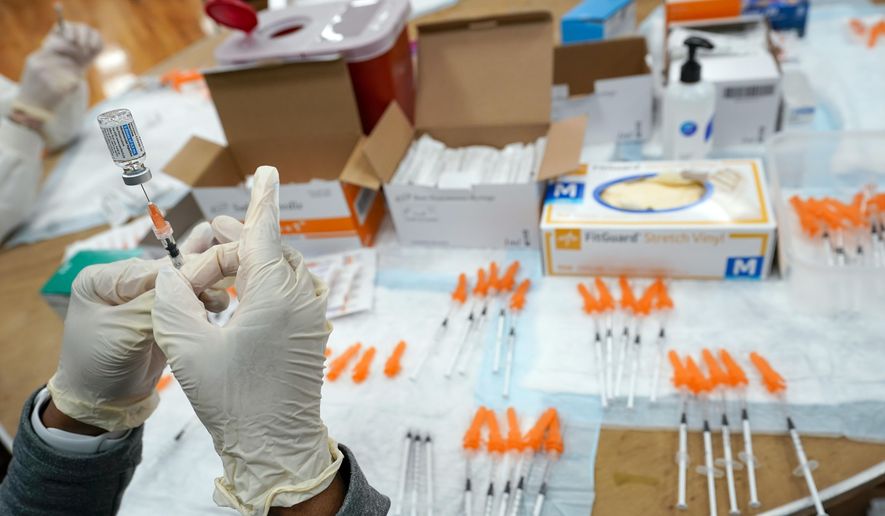The Food and Drug Administration plans to authorize boosters that target the BA.4 and BA.5 coronavirus strains this fall without complete data on how the shots performed in humans, saying it has enough alternate data to ensure safety.
FDA Commissioner Robert M. Califf said the process is similar to the one regulators use each year for the flu, in which shots must be modified to match circulating strains. He said regulators will rely on real-world evidence from existing COVID-19 shots delivered to millions of people, clinical trial data on shots that targeted different omicron subvariants and non-clinical data from the lab on the BA.4/5 shots that will be rolled out by September or October.
“Real world evidence from the current mRNA COVID-19 vaccines, which have been administered to millions of individuals, show us that the vaccines are safe,” Dr. Califf tweeted. “As we know from prior experience, strain changes can be made without affecting safety.”
Pfizer-BioNTech and Moderna are seeking authorization of “bivalent” booster shots that target both the original strain of the coronavirus and the fast-moving BA.4 and BA.5 variants that are dominant now and can evade existing immune defenses to a degree.
“Bivalent and multivalent vaccines are very common, and modifying a vaccine to include different virus strains often does not require a change in other ingredients,” Dr. Califf said. “FDA has extensive experience with reviewing strain changes in vaccines, as is done with the annual flu vaccine.”
FDA advisers agreed in June that fine-tuning the shots to target omicron and its spinoffs was the best approach ahead of a possible winter surge. The booster campaign should begin in September or October.
Dr. Califf said the FDA does not plan to reconvene a panel of outside advisers because they weighed in during the June session.
The lack of new human-trial data could dissuade some people from getting the shots. Persons who’ve resisted COVID-19 shots have cited the size of the trials or the fact that messenger-RNA technology used in the shots is relatively new.
Slightly less than half of those fully vaccinated — or roughly a third of the U.S. population — have opted to get an initial booster shot.
Persons older than 50 have been eligible for a second booster since earlier this year, though only a third of people in that age group have come forward for one.
For more information, visit The Washington Times COVID-19 resource page.
• Tom Howell Jr. can be reached at thowell@washingtontimes.com.




Please read our comment policy before commenting.